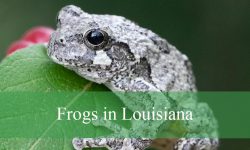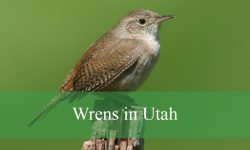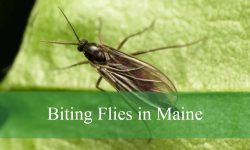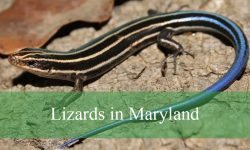Bugs that look like ticks can be confusing and alarming, especially when found in homes or gardens. These insects, such as head lice, spider beetles, and swallow bugs, often share similar features with ticks, like small size and round bodies, but they differ significantly in behavior, habitat, and threat level. Understanding these differences is crucial for effective pest management and reducing unnecessary worry.
Different Types of Bugs that look like Ticks
Brown Marmorated Stink Bugs
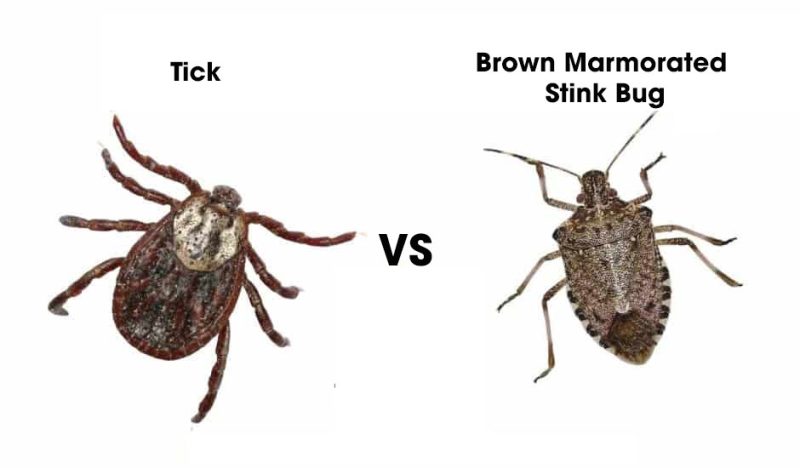
Brown Marmorated Stink Bugs are commonly found in clusters of eggs on the undersides of leaves in forests and woodlands. These eggs are greenish, ovate, and flat, measuring about 0.5mm in size.
In contrast to ticks, stink bugs have only six legs and lack antennae. Their nymphs, however, exhibit distinct characteristics: reddish-brown legs, a yellow-green body, and antennae with white stripes.
These bugs are known for their distinctive shield shape and foul odor emitted when disturbed, hence the name “stink bugs”. While they primarily feed on plants, they can become a nuisance when they invade homes in search of shelter during the colder months. Effective pest management strategies involve sealing entry points and reducing outdoor lighting to minimize attraction.
Carpet beetles
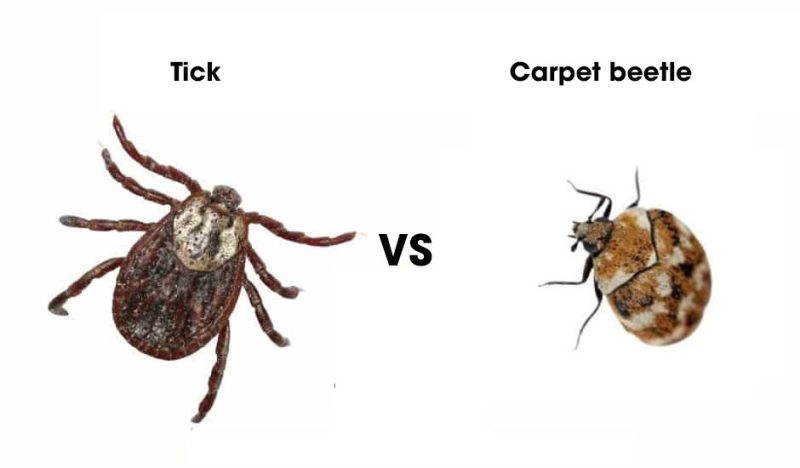
Carpet beetles are a prevalent household pest that typically remains indoors, unlike ticks, which are found outdoors. As their name suggests, they inhabit walls and carpets, where they feed on carpet fibers, woolen textiles, and other fibrous household materials. These pests are most active during warm temperatures and can cause damage to fabrics if left unchecked.
If you notice small white spots on your carpets or textiles, it’s likely due to carpet beetles. Effective management involves regular vacuuming, cleaning, and storing fabrics in sealed containers to prevent infestations and minimize damage to household items.
Ash Plant Bug
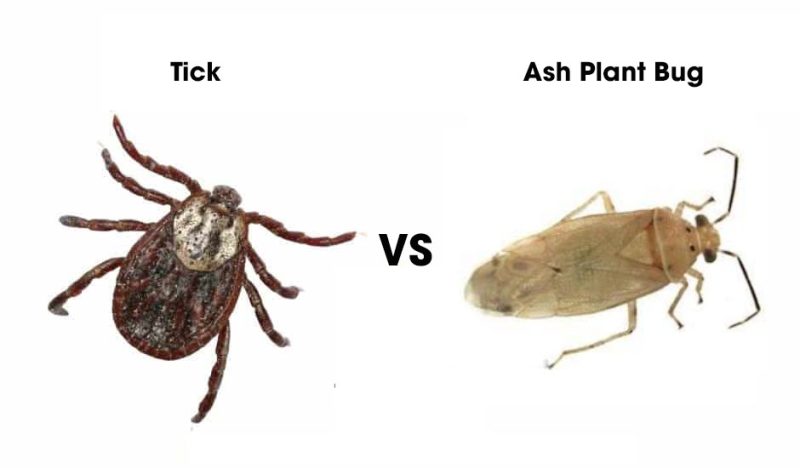
The Ash Plant Bug gets its name from its primary diet of tree sap, specifically from ash trees. These insects are particularly troublesome among ash tree lines because they feed on the sap, causing wilting and, eventually, the death of the trees. Although they are tiny, they can cause significant damage. They are more comparable in size to deer ticks than to the true ticks that feed on humans. Their rounded bodies and black color often lead to confusion with ticks.
However, a crucial distinguishing feature is that Ash Plant Bugs have six legs, unlike ticks, which have eight. This difference helps in identifying them correctly and addressing the issue they pose to ash trees. Their presence is a concern for anyone managing ash tree populations, as effective identification and management are essential to preventing widespread tree loss.
Bat Bug
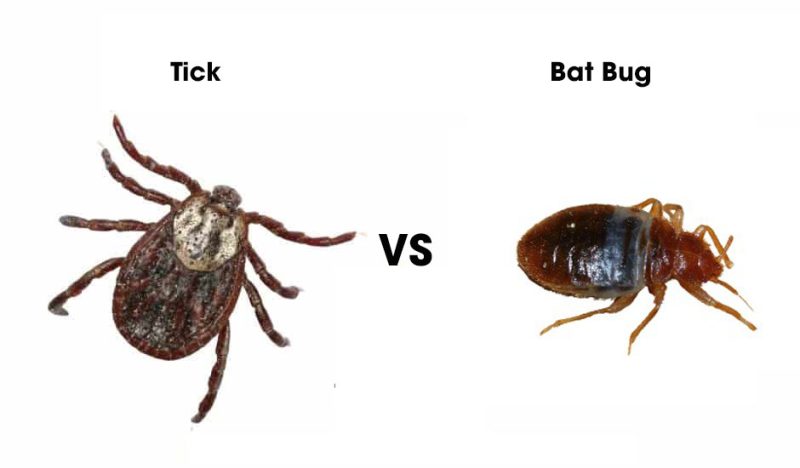
Bat Bugs are commonly found in attics, earning their name due to their bat-like tendencies. In the wild, they inhabit caves and feed on bats. Like ticks, bat bugs have tube-like mouths for feeding. However, they are more similar to bed bugs than ticks, characterized by a smaller size and a hairier thorax.
Despite their similarities to bed bugs, their specific habitat preferences and physical traits make them distinct, particularly their adaptation to living in close association with bats. This unique behavior sets them apart from other common household pests.
Bed Bug

Bed bugs are often likened to ticks due to their feeding habits, drawing blood from their hosts. While not as dangerous as ticks, their bites cause intense itching. These nocturnal pests are most active during dawn and night, seeking refuge under beds before feeding. Typically reddish-brown and measuring up to 0.25 inches in length, they have an oval and flat body shape. Their small size and ability to hide in crevices make them challenging to detect and eliminate.
Preventing bed bug infestations involves vigilant cleaning and regular inspections of bedding and furniture, especially in places where people sleep or rest for extended periods of time.
Booklice bug
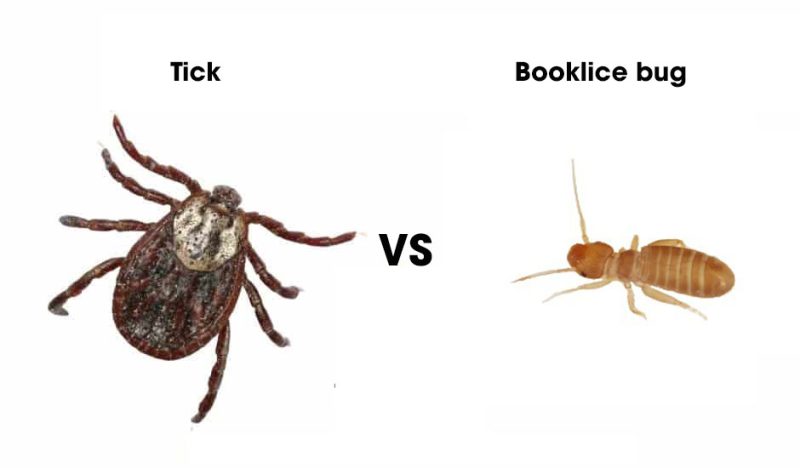
Booklice bugs, also known as Psocids, derive their name from their affinity for old books. Unlike ticks, these tiny insects do not feed on human blood but instead consume book cellulose. Although they pose no direct health risks to humans, they can become a nuisance in home libraries by feeding on algae, fungus, and decaying materials found in books.
Typically light and almost creamy brown, their color can darken as they consume binding glues from book pages. Managing booklice involves controlling humidity levels and ensuring proper ventilation in areas where books are stored, as they thrive in damp and humid environments conducive to mold growth.
Chigger
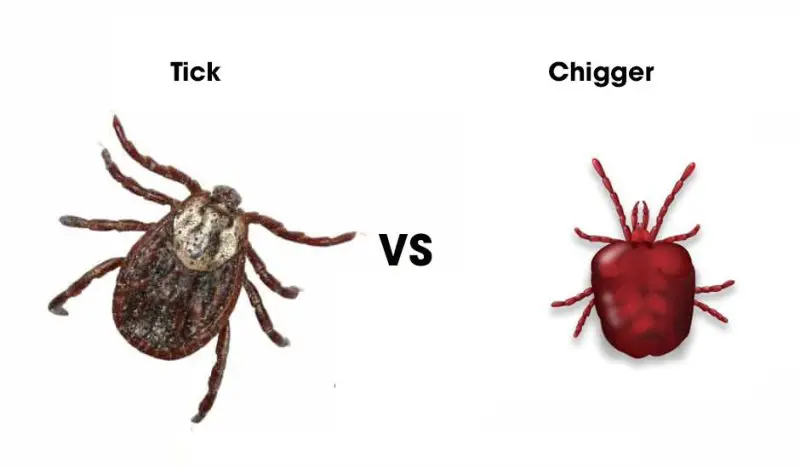
Chiggers, also known as harvest mites or red bugs, are often mistaken for true mites but are actually more closely related to scorpions, spiders, and ticks. They are identifiable by their red color and semi-transparent bodies. Unlike ticks, chiggers have six legs instead of eight and are not harmful to humans in the same way ticks can be.
They typically feed on the skin cells of vertebrate hosts during their larval stage, causing skin irritation and itching known as “chigger bites.” Understanding their biology and habitat preferences can help in preventing encounters and managing potential infestations, particularly in outdoor environments where they are commonly found.
Clover Mites
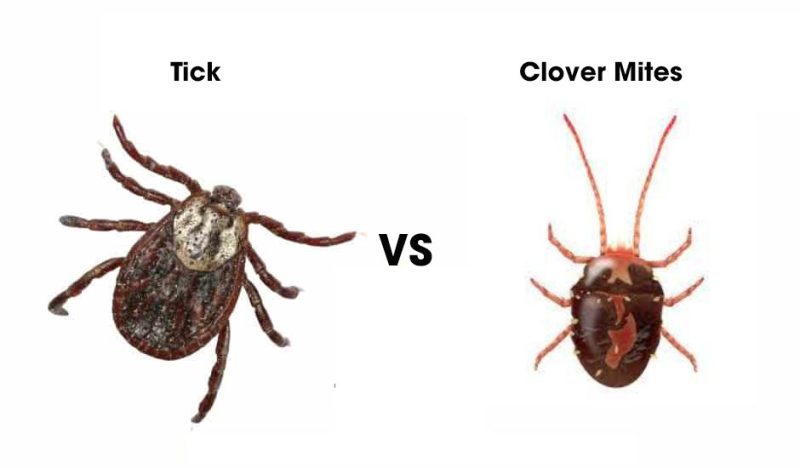
Clover mites are common garden pests that infest lawns and yards throughout the summer, particularly in regions where clovers thrive, such as in dry and hot climates. These small, soft-bodied creatures are often distinguished by their legs, which can resemble antennae, and occasionally appear bright red in color. While they do not pose a direct threat to humans, their presence can be detrimental to gardens and plants.
Clover mites feed on plant sap, which can weaken or stunt plant growth if populations become large. Effective pest management strategies include maintaining healthy plant conditions, reducing excess moisture, and implementing targeted treatments to control infestations without harming beneficial garden organisms.
Cockroach nymph
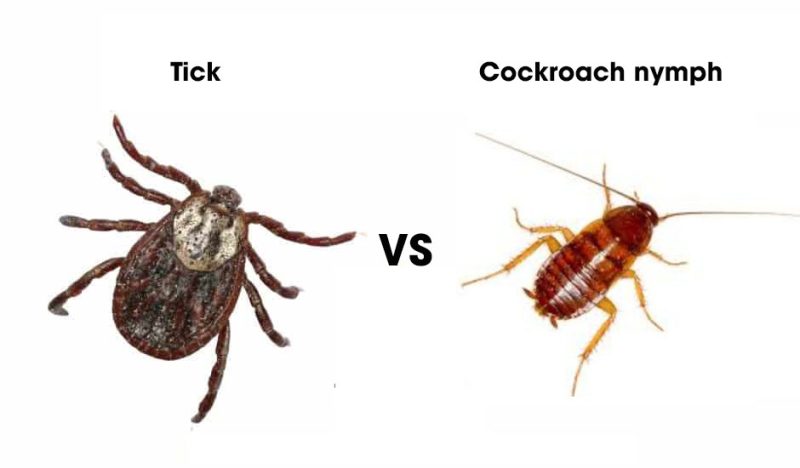
Cockroach nymphs, also known as brown banded cockroaches, are recognized by their light brown coloration and distinctive white bands. These immature cockroaches are commonly found on floorboards, walls, and under beds, where they seek shelter and food sources. Newly hatched nymphs bear a striking resemblance to ticks due to their light brown, somewhat transparent bodies, which darken to a reddish-brown hue as they mature.
While cockroach nymphs do not pose the same health risks as ticks, their presence indoors can indicate an infestation that requires prompt pest control measures. Effective management involves sealing entry points, reducing food and water sources, and utilizing targeted insecticides where necessary.
Deer bloodsucker
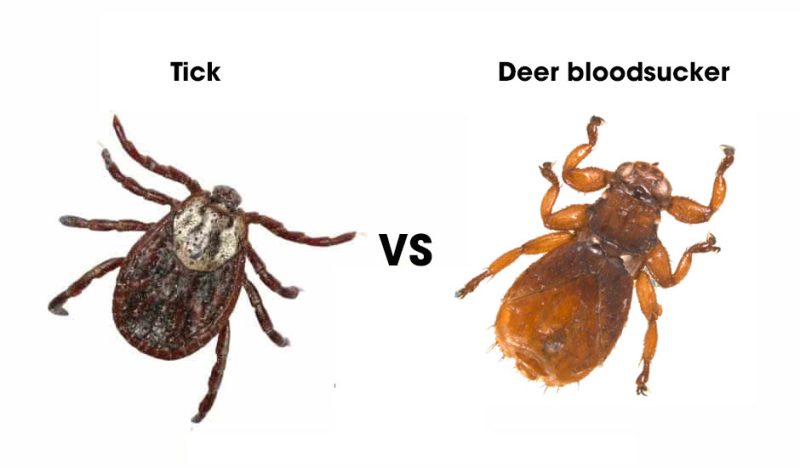
The deer bloodsucker, resembling insects like fleas, ticks, and flies, is a robust creature known for its sturdy claws, fleshy legs, and powerful body. Typically found in woodlands, it inhabits shrubs and trees, distinguished by its three pairs of limbs and nearly translucent wings. This bloodsucker primarily targets animals such as elk, deer, and cattle.
However, when animal hosts are scarce, they may enter homes and feed on human blood. Similar to ticks, they can transmit diseases like Lyme disease and other illnesses, making their presence concerning for both animal and human health. Effective pest management includes habitat modification and reducing outdoor exposure.
Drugstore beetles
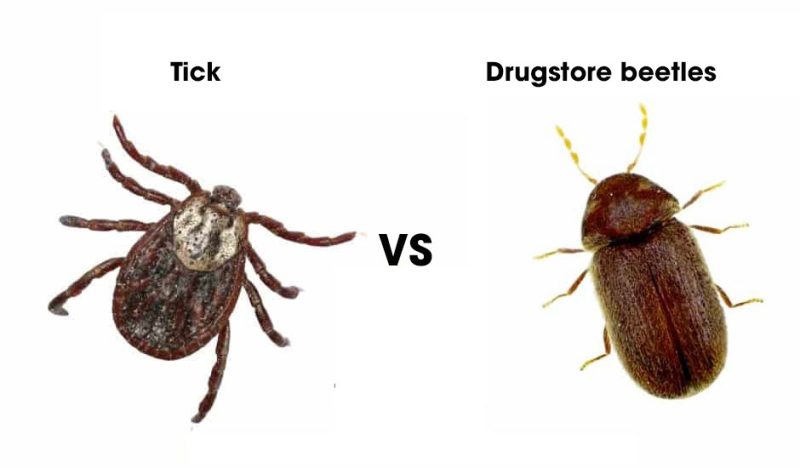
Drugstore beetles are notorious pests in homes, particularly in pantries and kitchens. Capable of surviving for weeks without food, they wreak havoc once they locate stored cereals, grains, and flour. Additionally, they are drawn to light sources. Resembling ticks due to their oval-shaped bodies, these beetles typically have wings but are unable to fly. They are characterized by their brown, hard outer shells, which protect them from environmental hazards.
Effective control of drugstore beetles involves proper storage practices, such as sealing food containers tightly and promptly disposing of infested items. Regular cleaning and inspection of pantry shelves are also essential to prevent infestations.
Harlequin Cabbage Bug
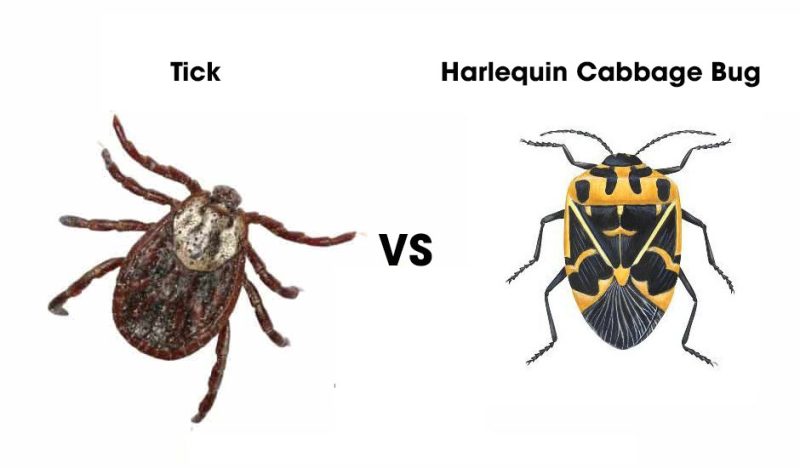
Harlequin Cabbage Bug nymphs resemble ticks due to their dark brown and reddish coloration. As they mature, these bugs develop hard forewings and vibrant bodies featuring white, orange, and black hues. Unlike ticks, they have six legs and belong to the stink bug family, possessing glands at the base of their legs that emit a foul odor.
Distinctive characteristics of the Harlequin Cabbage Bug include their snouted legs, red and black eyes, and relatively short antennae compared to their body length. These bugs are commonly found on cabbage and other cruciferous plants, where they feed and can cause significant damage to crops.
Head Lice
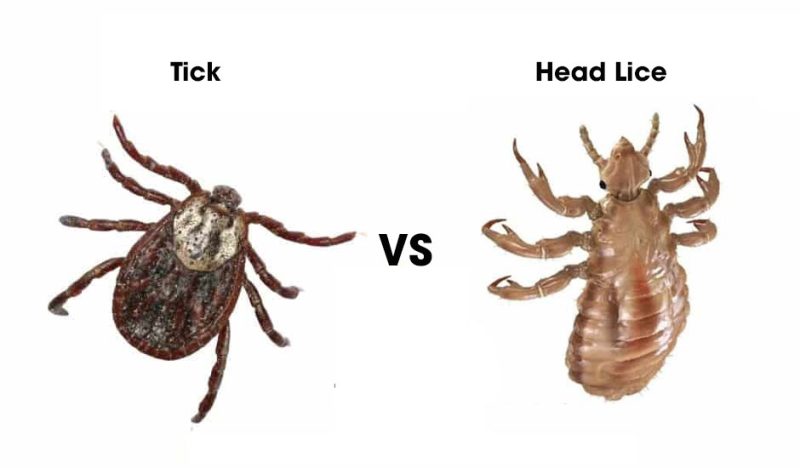
Head lice are comparable to ticks because they also feed on human blood. Mostly found in human hair, hence their name, they can occasionally be found on birds’ feathers. These wingless insects are very tiny, with semi-transparent bodies and six legs. Unlike ticks, head lice do not carry life-threatening diseases like Lyme disease.
However, they cause significant itching and discomfort, especially in warm temperatures. Their presence leads to irritation and inconvenience, necessitating prompt treatment to eliminate the infestation and relieve the symptoms. Regular hygiene and careful inspection are key to preventing and managing head lice.
Poplar Weevils
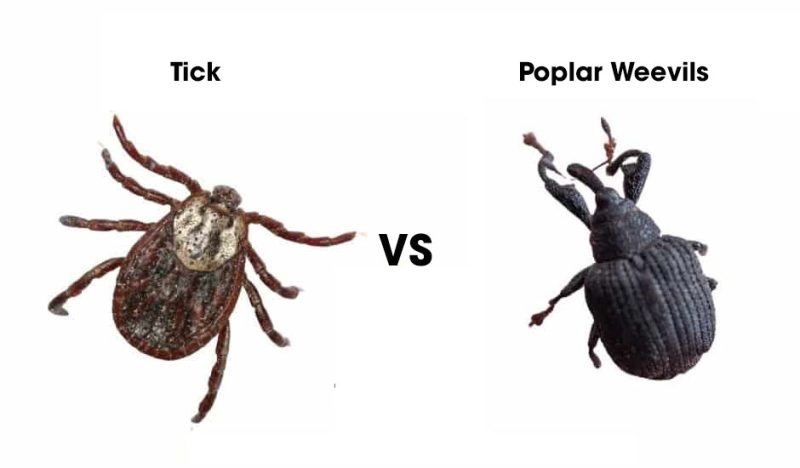
Poplar weevils are a serious threat to poplar trees, identifiable by the scattered holes they leave behind. These pests have a metallic green body, a snouted nose, and reddish-brown wings, growing up to 0.25 inches long. They weaken tree branches, potentially leading to tree death. Unlike ticks, poplar weevils can fly and do not bite humans or feed on their blood.
Their primary impact is on trees, making them a significant concern for anyone managing poplar tree populations. Early detection and management are crucial to prevent extensive damage and ensure the health of affected trees.
Spider beetles
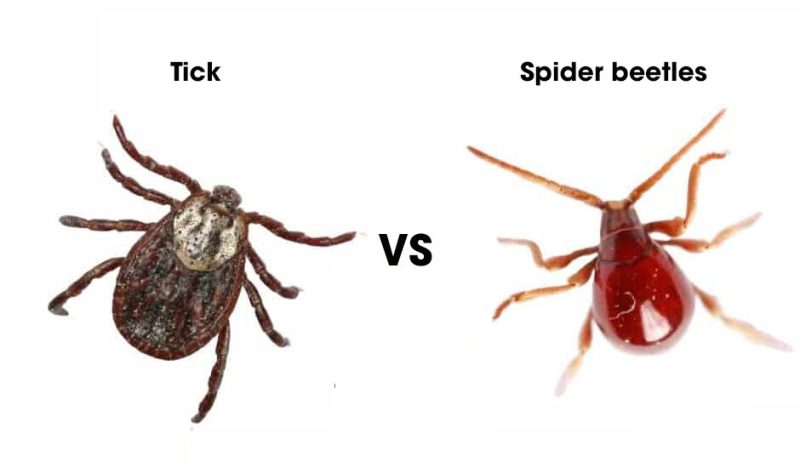
Spider beetles feed on tree sap and not on human blood, making them outdoor bugs commonly found in grass turfs. They are easily identifiable by their long, slender bodies, which can grow up to 0.5 inches. Named for their dark legs and thoraxes that resemble spiders, spider beetles also have brown heads and oval-shaped bodies.
Their spider-like appearance can be misleading, but their primary diet and habitat set them apart from other pests. Despite their name, these beetles pose no threat to humans and are primarily concerned for the vegetation they infest.
Skin beetles
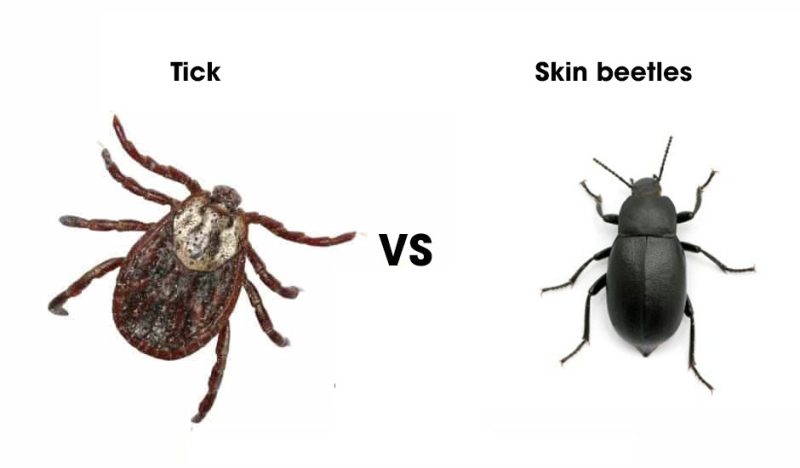
Skin beetles are voracious eaters, consuming a wide range of materials, including jackets, textiles, wood, boxes, and books. They are identifiable by their black heads and brown bodies. Comparable to ticks due to their small size, skin beetles can pose health risks to humans because of their indiscriminate diet.
Although they do not bite humans or feed on blood, they may occasionally nibble on the skin, causing red and itchy blisters. Their presence in homes can be troublesome, necessitating prompt action to protect personal belongings and prevent discomfort from accidental bites.
Swallow bug
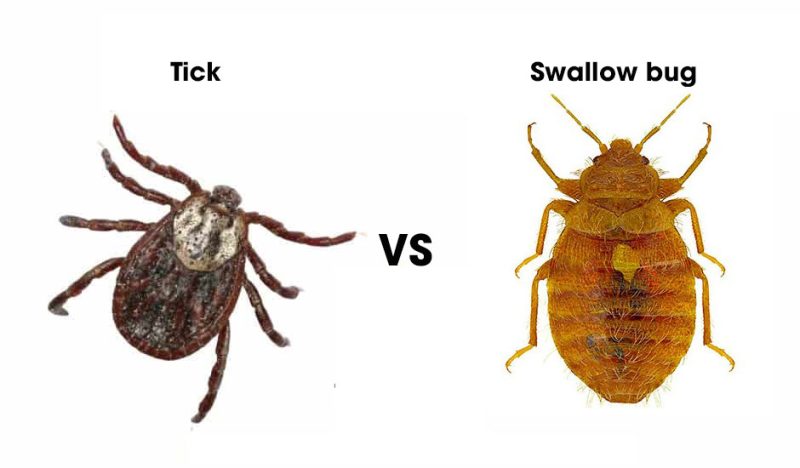
Swallow bugs are native to the warmer climates of the southern USA and Central America. Among the bugs listed, they most closely resemble mature ticks, appearing almost identical. Like ticks, swallow bugs can bite humans, but they are not known to primarily feed on human blood. They breed inside homes during the summer and can survive for weeks without food.
Unlike ticks, swallow bugs have a flatter shape and a grayish-brown color, compared to the reddish-brown hue of ticks. Their presence indoors can be a nuisance, requiring careful management to prevent and control infestations.
Spider
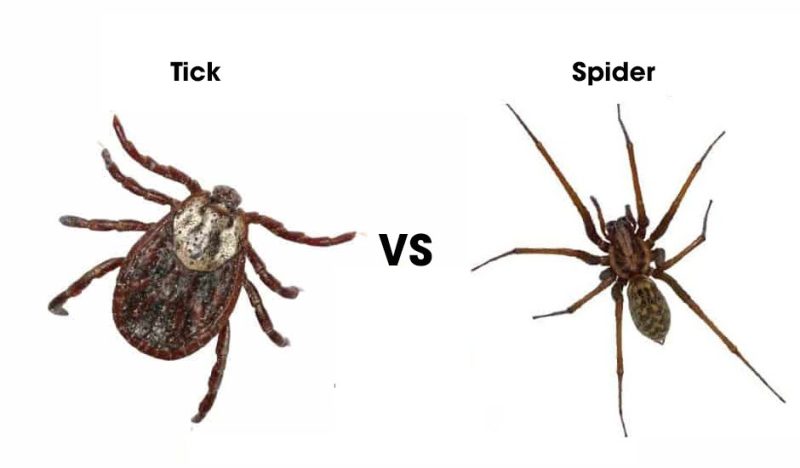
Ticks and spiders are both arachnids, but they are easily distinguishable. Spiders have four pairs of limbs, a sturdy exoskeleton, and a convex body. They are averse to light and typically prey on insects and small animals by trapping them in sticky webs.
Spiders are most active during the summer but can sometimes be spotted crawling on the skin, unlike ticks, which latch on to feed. Although spiders rarely bite humans, their bites can cause itching and swelling. Their primary role in the ecosystem is as predators of other insects, helping to control pest populations.

